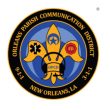A big voice in the Big Apple
What is in this article?
Narrowbanding drives broadband
Ironically, Dowd's controversial broadband positions were a response to the FCC's narrowbanding mandate. At a time when most large metropolitan areas boast 800 MHz public-safety systems, the New York City Police Department uses a conventional analog UHF system that provides 95% in-building coverage and 99.999% on-street coverage for portables, Dowd said.
Thanks to system-refreshing efforts, Dowd said New York is confident the UHF system could last another five to 10 years. However, because the system operates at frequencies below 512 MHz, the NYPD network is subject to FCC rules requiring that the system move from 25 KHz channels to 12.5 KHz channels by Jan. 1, 2013, which is less than four years away. On top of that, the FCC has made it clear in its rulings that the agency eventually plans to mandate a move to 6.25 KHz channels.
For the NYPD, narrowbanding the UHF system would cost between $100 million and $300 million, Dowd said. He and other city officials questioned whether this “unfunded [narrowbanding] mandate” from the federal government would be the best use of taxpayer funds.
“If you look at the investment in a narrowband system, you're investing a lot of money for public safety to do exactly what it does right now, which is two-way voice,” Dowd said. “So you're looking at an investment that gives you absolutely no return.”
In addition, narrowbanding NYPD's UHF network logistically promises to be an “absolute nightmare,” Dowd said, because the high volume of round-the-clock network traffic leaves the system with little or no open spectrum to use while a narrowbanding transition is executed.
“We use all of our frequencies all of the time,” he said. “To try to do [narrowbanding] in a system that's as busy as ours — a system that's live all the time — it's really almost an impossibility, and it really is an obvious safety risk to cops on patrol. The idea that maybe you could double up frequencies would be very problematic for an organization like the NYPD.”
For these reasons, Dowd said a much better option would be for the NYPD to build a public-safety-grade broadband system at 700 MHz that would be used not only for high-speed data applications but also for mission-critical dispatching. Such a move to greater broadband capabilities is more easily supported from a return-on-investment perspective and would greatly reduce the logistical challenges facing NYPD, he said.
“It doesn't make a lot of sense to us to build a narrowband system, when it's clear that all the technology, all the R&D and all the focus — not just on a nationwide basis but on a worldwide basis — is on broadband. Our sense of it is that's where we should be focused,” Dowd said. “It doesn't make a whole lot of sense to spend all that money in narrowband to get a system in the next two, three or even four years, only to realize a year or two after that that you're in the wrong technology. What's the sense at this point?
“There's green-space spectrum [at 700 MHz] where we could migrate and be more efficient on a new technology, but at the same time not have to be turning the old system off and on while we migrate to a new system.”









